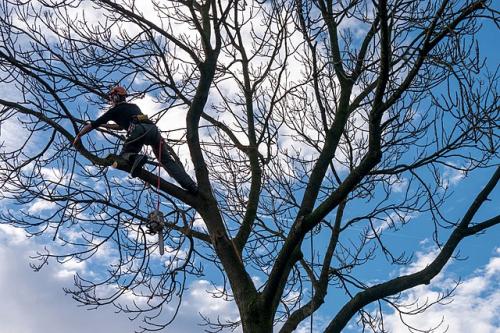|
Recent Entries to this Blog
Photinia Red Robin characteristics and most important care
Posted: 29 May 2023 Posted: 03 May 2023 Posted: 22 Apr 2023 Posted: 11 Apr 2023 Posted: 01 Apr 2023 All Entries |
Tree Surgeon vs. Arborist: What's the Difference?When it comes to caring for your trees, you may have heard the terms "tree surgeon" and "arborist" used interchangeably. However, while the two professions share some similarities, they are not the same. 
( photo / image / picture from AlbertoL's Garden ) In this article, we'll explore the key differences between tree surgeons and arborists, including their education and certification requirements, the services they provide, the tools and equipment they use, their safety standards, cost differences, and how to choose. . the right professional for your needs. Whether you live in England and need a tree surgeon in Nottingham, or are an American looking for an arborist in Phoenix, this post will come in handy. ;) I. Education and Certification Both tree surgeons and arborists require a certain level of education and training to be qualified for their respective professions. Tree surgeons typically complete a vocational or technical school program in tree care, which covers topics such as tree identification, pruning, tree removal, and pest management. They may also complete on-the-job training with an experienced tree care professional. In terms of certification and licensing, requirements can vary depending on the state or country. In the United States, for example, some states require tree surgeons to be licensed and certified by a professional organization such as the International Society of Arboriculture (ISA). Arborists, on the other hand, typically have more extensive education and training requirements. Most arborists have a bachelor's degree in forestry, horticulture, or a related field, and many hold a certification from a professional organization such as the ISA. These certifications require passing a comprehensive exam and demonstrating a certain level of experience and knowledge in the field. It's important to note that hiring a certified professional is important, as it ensures that the individual has the necessary skills and knowledge to safely and effectively care for your trees. II. Services Provided Both tree surgeons and arborists provide a range of services related to tree care, but the types of services offered can differ between the two professions. Tree surgeons typically focus on the physical care of trees, such as pruning, trimming, and removal. They may also offer services such as stump grinding, cabling and bracing, and pest management. Arborists, on the other hand, take a more holistic approach to tree care. They not only provide physical care for trees but also offer services such as tree planting, tree preservation, and consulting on tree-related issues. Arborists may also be involved in urban forestry and land management. III. Tools and Equipment Both tree surgeons and arborists use a range of tools to carry out their work. However, the tools used may vary depending on the type of work that needs to be done. Some of the common tools used by both professionals include: ⢠Chainsaws: These are a crucial tool for both tree surgeons and arborists. They are used for cutting branches, limbs, and even entire trees. ⢠Climbing equipment: Both tree surgeons and arborists need to climb trees to carry out their work. They use climbing harnesses, ropes, and ladders to climb trees safely. ⢠Pruning tools: Pruning is an important aspect of tree care, and both tree surgeons and arborists use a range of pruning tools, including pruning saws, secateurs, and loppers. ⢠Wood chippers: After a tree has been cut down or pruned, the branches and other debris need to be disposed of. Wood chippers are used to turn the debris into wood chips, which can be used for various purposes. ⢠Stump grinders: When a tree has been cut down, the stump needs to be removed. Stump grinders are used to grind the stump into small pieces, which can then be used as mulch or removed altogether. ⢠Soil aeration tools: Arborists may use soil aeration tools to improve the health of trees by improving the soil quality and allowing oxygen to reach the roots. ⢠Diagnostic tools: Arborists use diagnostic tools, such as microscopes and sap tests, to determine the health of trees and identify any diseases or pests that may be present. It's worth noting that while both tree surgeons and arborists use similar tools, they may use them in different ways. For example, an arborist may use a pruning saw to remove dead or diseased branches, while a tree surgeon may use a chainsaw to remove entire limbs or trees. In addition to the tools used, there are some other key differences between tree surgeons and arborists. Let's explore some of these differences in more detail. This blog entry has been viewed 499 times
You're reading one of many blogs on GardenStew.com.
Register for free and start your own blog today. Login or register to leave a comment. |
|
